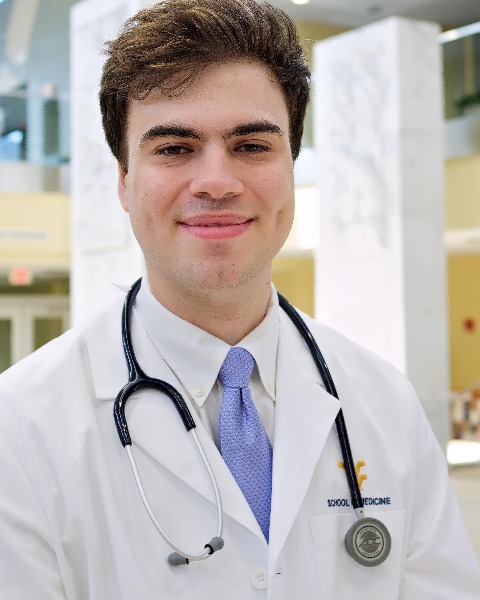Plenary
Plenary Session I
(PS1) Neurosurgerypac: An Analysis of Political Contribution Data
Saturday, April 22, 2023
8:54am - 9:04am PST
Location: Enter through AANS Exhibit Hall

William Blanks, Jr., BS
Medical Student
WVU School of Medicine
Raleigh, North Carolina, United States
Presenting Author(s)
Disclosure(s):
William Blanks, BS, Jr.: No financial relationships to disclose
Introduction: NeurosurgeryPAC makes campaign contributions to U.S. House and Senate candidates to advance its advocacy agenda. Recent efforts have aimed to prevent steep Medicare cuts for surgeons, reform prior authorization, and increase funding for graduate medical education and biomedical research. This study investigates recent trends in NeurosurgeryPAC contributions relative to other specialties.
Methods: Per campaign finance law, individual contributions greater than $200 must be reported to the Federal Election Commission (FEC). In this study, we examined FEC data for PACs associated with professional physician societies, including NeurosurgeryPAC. The following variables were obtained for a two-year election cycle: dollars raised per year, number of donations, and quantity of contributions. Data were then compared to other physician PACs and adjusted for specialty size using the AAMC’s physician specialty reports to compare donation trends.
Results: Of 215.8 million raised by physician PACs registered with the FEC (n=33) between 2006 and 2022, NeurosurgeryPAC received 3.8 million (1.8%) of the total physician PAC money raised during this time, ranking 17 for individual PAC contributions. Of all PACs analyzed, NeurosurgeryPAC ranked 2nd with an average of $1003 per donation from 2006 to 2022. Of those PACs, 27 had corresponding AAMC data, and neurosurgery ranked 13th in donations when adjusted for specialty size.
Conclusion : In 2022, NeurosurgeryPAC’s donation rate ranking dropped to 15 of the 27 with a donation rate of 5.8%. While determining the origins of political power is complex and cannot be attributed to a single cause, PAC contributions are a significant factor in ensuring adequate political representation. As such, increased participation in NeurosurgeryPAC is essential. More involvement of neurosurgeons in the policy and political space will likely lead to policies that increase access to care for neurosurgical patients.
Source: FEC
Methods: Per campaign finance law, individual contributions greater than $200 must be reported to the Federal Election Commission (FEC). In this study, we examined FEC data for PACs associated with professional physician societies, including NeurosurgeryPAC. The following variables were obtained for a two-year election cycle: dollars raised per year, number of donations, and quantity of contributions. Data were then compared to other physician PACs and adjusted for specialty size using the AAMC’s physician specialty reports to compare donation trends.
Results: Of 215.8 million raised by physician PACs registered with the FEC (n=33) between 2006 and 2022, NeurosurgeryPAC received 3.8 million (1.8%) of the total physician PAC money raised during this time, ranking 17 for individual PAC contributions. Of all PACs analyzed, NeurosurgeryPAC ranked 2nd with an average of $1003 per donation from 2006 to 2022. Of those PACs, 27 had corresponding AAMC data, and neurosurgery ranked 13th in donations when adjusted for specialty size.
Conclusion : In 2022, NeurosurgeryPAC’s donation rate ranking dropped to 15 of the 27 with a donation rate of 5.8%. While determining the origins of political power is complex and cannot be attributed to a single cause, PAC contributions are a significant factor in ensuring adequate political representation. As such, increased participation in NeurosurgeryPAC is essential. More involvement of neurosurgeons in the policy and political space will likely lead to policies that increase access to care for neurosurgical patients.
Source: FEC
